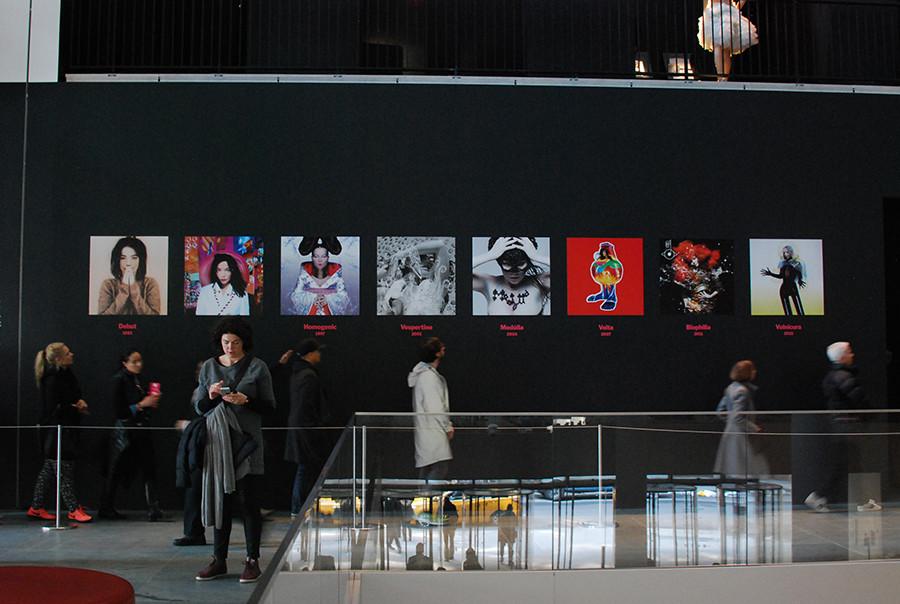Björk retrospective at MoMA underwhelms
Björk’s retrospective runs at the MoMA until June 7.
March 10, 2015
The new Björk exhibition at the Museum of Modern Art is an ambitious retrospective, as it attempts to convey the multifaceted nature of Björk’s 20-year career. Whether viewers are fans of her music or are not, it is hard to deny that the Icelandic artist has consistently been ahead of the game in terms of her art, music, and costumes. Her daring ideas, displayed at MoMA challenge perception, just as her music creates metaphors bigger than herself.
Just as the artist’s career has spanned multiple disciplines, the exhibition represents her work through different sound, visuals, film, objects and costumes, including the notable swan dress she wore at the 73rd Academy Awards. On the second floor, in the Marron Atrium, two rooms that project Björk’s music videos. One is dedicated to her new sound, “Black Lake,” a song from her newly released album “Vulnicura.” The other room is dedicated to her older works, including “Debut,” her 1993 album and “Biophilia,” her 2001 studio album. The dark cinema rooms that display her music videos create ambiance for Björk’s work to be admired. The speakers are placed in such a way that they create an echo effect, and two screens create a metaphorical world through powerful visuals and heartfelt sounds.
On the third floor, objects, visuals and costumes are displayed with the intention of creating an intimate and poetic space. Viewers are meant to interact with the displays by listening to “Songlines” in their headphones. Björk created the audio experience in collaboration with Sjon, an Icelandic novelist and poet. “Songlines” is a poetic and fairytale-like narrative following Björk’s first seven albums, which viewers can listen to and enjoy through multiple perspectives.
Despite the exhibit’s interactivity, between its massiveness and confusing configuration, it at times seems scattered and undeveloped. For instance, some objects are displayed haphazardly and the exhibition space feels cramped.
There was also confusion in terms of ticketing. In order to gain access to the third floor, patrons must get timed tickets on-site on a first-come, first-served basis — albeit at no additional cost. It is therefore necessary to get to the third floor early, as these tickets often sell out quickly.
The exhibition is under a lot of pressure to recreate Björk’s avant-garde work while still maintaining coherency, and MoMA is conflicted as to how to create a unified theme. There is a lack of commitment to a single narrative and it shows through the disorganized manner of the objects’ layout. Different mediums are intended to bring Björk’s career to life, but the overwhelming platforms disorient the viewers.
Björk’s exhibition is simultaneously confusing, thought-provoking and inspiring. Perhaps the chaotic, scattered exhibition space serves as a reflection of the rawness of her skills as an avant garde, hard-to-define artist. However, it fails to achieve the level of cohesion needed to make the exhibition anything more than a cacophonous collection of
disparate pieces.
Entry to the Björk exhibition is included with general museum admittance, and it will be on display at MoMA until June 7.
A version of this article appeared in the Tuesday, March 10 print edition. Email Rebecca Brown at [email protected]
























































































































































